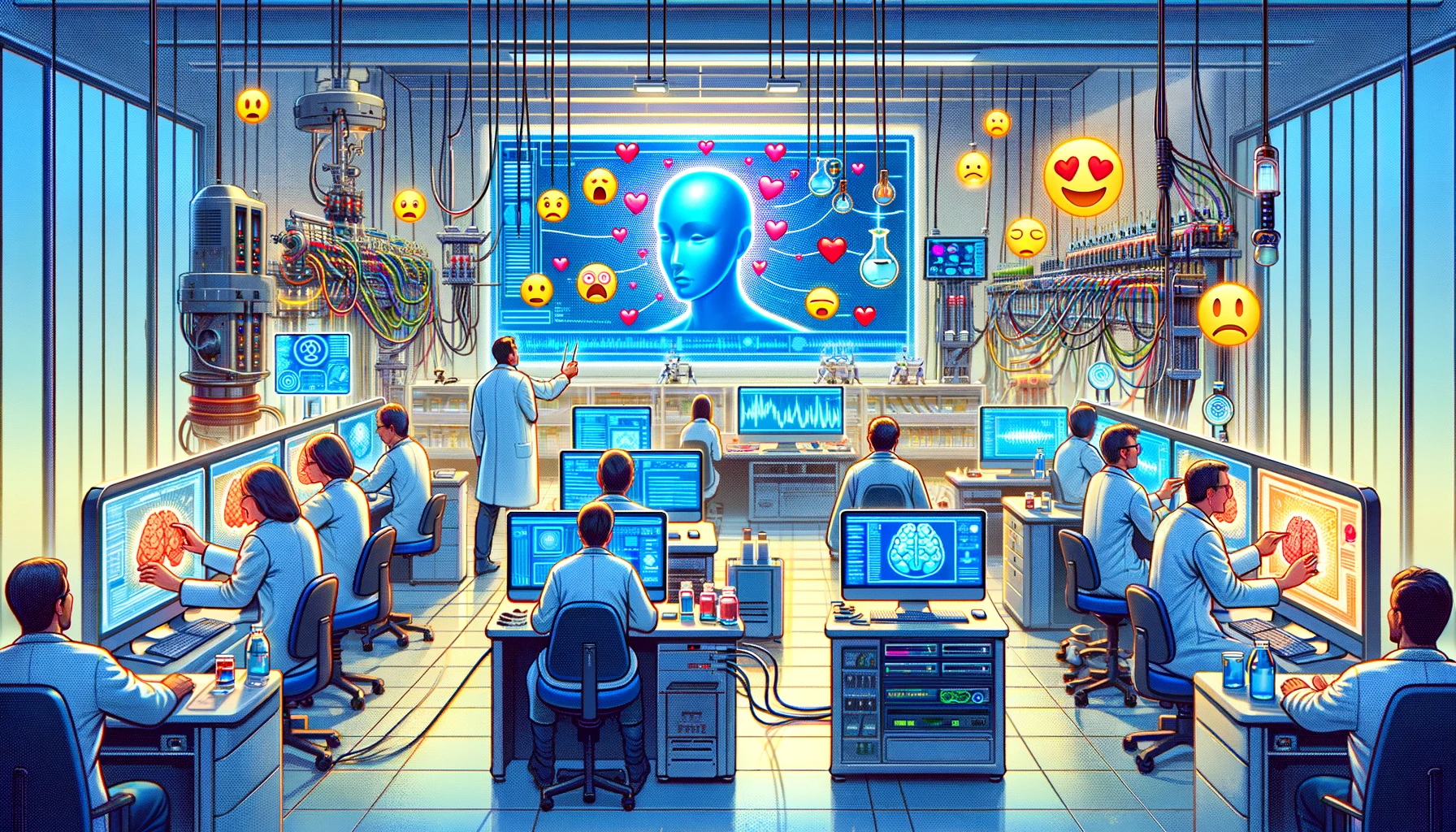Understanding human emotions is a fundamental aspect of our daily lives. Emotions play a pivotal role in our interactions, decision-making processes, and overall well-being. Whether it’s recognizing joy in a loved one’s smile, detecting frustration in a colleague’s tone, or empathizing with someone experiencing sadness, our ability to interpret and respond to emotions is a cornerstone of human communication and connection.
In recent years, there has been a significant surge in the use of Artificial Intelligence (AI) to decipher and respond to human emotions. AI systems are increasingly being employed in various contexts, from customer service chatbots that aim to gauge user satisfaction to healthcare applications that strive to understand a patient’s emotional state. This rapid integration of AI into our emotional landscape raises a central question: Can AI truly understand and respond to human emotions, or are there inherent limits to its capabilities in this complex realm?
This article delves into the profound importance of comprehending human emotions across different domains. It explores the growing role of AI in interpreting and responding to emotions, shedding light on the promises and potential pitfalls of this technology. Through a comprehensive examination of the subject, we aim to uncover the boundaries of AI’s capacity to grasp the intricacies of human emotions and its implications for our future interactions with AI-driven systems.
The Promise of AI in Emotion Recognition
In recent years, AI has made remarkable strides in the field of emotion recognition. Thanks to advancements in machine learning and computer vision, AI systems can now analyze a variety of cues to interpret human emotions. These cues include facial expressions, voice tone, and text sentiment.
AI’s ability to recognize emotions has far-reaching implications across different domains. In healthcare, for example, AI-powered systems can assist in diagnosing and treating mental health conditions by analyzing a patient’s emotional state. Customer service chatbots equipped with emotion recognition can tailor responses to a user’s mood, enhancing user satisfaction. In the realm of education, AI can provide valuable insights into students’ emotional well-being, allowing educators to offer targeted support.
The Complexity of Human Emotions
Despite AI’s progress, human emotions remain incredibly complex and multifaceted. Emotions are influenced by a myriad of factors, including cultural norms, personal experiences, and situational context. This complexity poses significant challenges for AI in accurately interpreting and responding to emotions.
One of the key limitations of AI is its difficulty in understanding nuances and cultural differences in emotional expression. What may be perceived as happiness in one culture could be interpreted differently in another. Additionally, context plays a crucial role in emotion interpretation. The same facial expression can convey different emotions depending on the situation.
In real-world scenarios, AI sometimes misinterprets or fails to capture the full range of human emotions. This can lead to misunderstandings and miscommunications, particularly in cross-cultural interactions or situations with intricate emotional dynamics.

The Role of Data and Machine Learning
AI’s ability to understand emotions heavily relies on data and machine learning. To effectively recognize emotions, AI systems need access to diverse and representative datasets. These datasets allow AI algorithms to learn patterns and associations between emotional cues and states.
However, the quality and representativeness of the data are critical. Biased or insufficient datasets can lead to AI systems making inaccurate or biased emotional assessments. For example, if the training data primarily consists of one demographic group, the AI system may struggle to interpret emotions from other groups accurately.
In this section, we will delve into the importance of data and machine learning in AI’s understanding of emotions and discuss the limitations associated with data biases and insufficiencies.
Ethical Considerations
As AI continues to advance in emotion recognition, ethical concerns become increasingly significant. It’s essential to address these dilemmas to ensure responsible and ethical use of emotion recognition technology.
Privacy is a central ethical concern. Emotion recognition often involves analyzing personal data, such as facial expressions or voice tone, to infer emotional states. This raises questions about consent and data protection. Individuals may not be aware that their emotions are being monitored or may not have explicitly given consent for such analysis.
Another ethical concern is the potential misuse of emotion recognition technology. In some cases, it can be used for manipulative purposes, such as targeted advertising or political campaigns. There are fears that AI systems could exploit emotional vulnerabilities for profit or control.
AI developers and policymakers play a crucial role in addressing these ethical challenges. They need to establish clear guidelines and regulations governing the use of emotion recognition technology, ensuring transparency, informed consent, and protections against misuse. Balancing the potential benefits of AI in understanding emotions with ethical considerations is a complex but essential task.
The Human-AI Interaction
The interaction between humans and AI systems can have a profound impact on individuals’ emotions and well-being. Depending on the context and the design of AI systems, these interactions can lead to various emotional responses.
In some cases, AI-driven interactions can positively affect individuals. For example, virtual assistants and chatbots equipped with emotion recognition can provide empathetic responses and emotional support. These systems can be particularly valuable in healthcare and mental health settings, where they can offer assistance and companionship.
However, there are instances where AI interactions may have negative emotional consequences. Users may feel frustrated or misunderstood if AI systems fail to accurately interpret their emotions or provide appropriate responses. Additionally, concerns about AI replacing human interactions in certain domains can lead to feelings of isolation and detachment.
Research in this area is essential to better understand how AI interactions impact human emotions and well-being. This section will explore various cases and studies that shed light on the emotional responses of users to AI systems, both positive and negative. It will highlight the complexities of the human-AI relationship and the need for user-centered AI design.
AI and Mental Health Support
One promising application of AI in the field of emotions is its potential to provide mental health support. AI-driven chatbots, virtual therapists, and emotional analysis tools have been developed to assist individuals in managing their mental well-being.
AI chatbots, for example, can engage with users in conversation, offering a non-judgmental space for people to express their emotions and concerns. Virtual therapists can provide therapeutic interventions, guided exercises, and coping strategies tailored to an individual’s emotional state.
While these AI applications show promise, there are also limitations and concerns. AI is not a substitute for human therapists, and there are risks associated with relying solely on AI for mental health care. The effectiveness of AI-based interventions varies, and there are ethical concerns about the privacy and security of personal emotional data.
This section will explore the potential of AI in mental health support, discussing the benefits and limitations of AI chatbots and virtual therapists. It will also delve into the ethical considerations of using AI in such sensitive domains and the need for responsible and empathetic AI-driven mental health support.
The Future of AI and Emotions
The future of AI in understanding and responding to human emotions holds great promise. As technology continues to advance, AI systems are likely to become more sophisticated in their ability to interpret and interact with human emotions.
Advancements in AI technology will likely include improved accuracy in emotion recognition across different modalities, such as facial expressions, voice tone, and text sentiment. These developments will have significant implications for various fields, including healthcare, customer service, and mental health support. AI systems will become better at providing empathetic and context-aware responses, enhancing their utility in human-machine interactions.
Research in the field of affective computing, which focuses on enabling machines to recognize and respond to human emotions, will continue to expand. This research will contribute to the development of AI systems that can better understand the nuances of human emotional experiences, including cultural variations and individual differences.
The evolving relationship between AI and human emotions will also be shaped by societal and ethical considerations. Responsible AI development will be paramount, with a focus on transparency, privacy, and consent. Regulatory frameworks will likely emerge to govern the use of emotion recognition technology, ensuring that it benefits society while respecting individual rights.

Conclusion
The capabilities and limitations of AI in understanding human emotions are central to the ongoing dialogue surrounding artificial intelligence. While AI has made significant strides in emotion recognition, it is essential to recognize its complexities and challenges.
AI offers the promise of enhancing various aspects of our lives, from mental health support to customer service. However, we must also acknowledge the limitations of AI, particularly in comprehending the intricate nature of human emotions, cultural variations, and context.
As AI continues to evolve, responsible development and ethical considerations must remain at the forefront. The future of AI and emotions will likely involve a delicate balance between the potential benefits it brings and the ethical safeguards required to protect individuals’ rights and well-being.
Ultimately, the journey to improving AI’s emotional intelligence is ongoing, and it is a journey that should be guided by our commitment to better understand, respect, and respond to the rich tapestry of human emotions.
